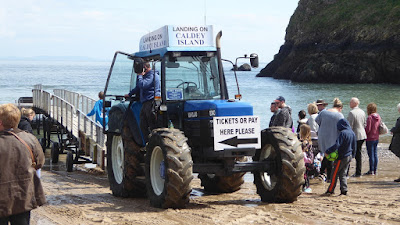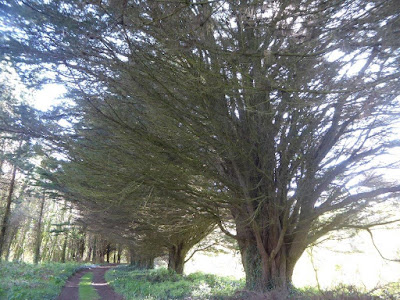I managed to tick 2 more things off my London 'to do list' when I recently visited two small private museums. Unfortunately photography is not allowed inside either place, so I only have photos of the exterior.
Dennis Severs' House
18 Folgate Street, Spitalfields.
This 5 storey house is a time capsule. Dennis Severs (1948 - 1999) lived in the house and lived there in the same way that the early 18th century occupants might have done. We are told these were a family of Huguenot silk-weavers from 1724 to the dawn of the 20th Century. It was Dennis Severs’ intention as an artist that as you enter his house it is as if you have passed through the surface of a painting, exploring with your senses and imagination the the sights, smells and sounds of the house.
The house is open to visitors for 2 hours on a Monday. A few people are allowed in at a time, and there is total silence. The house is dark, lit only by candles, firelight and limited daylight from the windows. The 10 rooms are mostly jam packed with items as if the inhabitants, the Jervis family, were still living there. There are different smells and different sounds, such as ticking clocks, church bells. Photography is not allowed. £10 entry. See more on
Dennis Severs' House official site.
Whilst I was out I passed the memorial to Sun Yat-Sen. He was the founding father of China, born in 1866. He became leader of the Chinese Nationalist Party, having overthrown the Qing (Manchu) dynasty. After a plot for an uprising in Guangzhou failed, he went into exile overseas for 16 years. This included London, in 1896.
He was detained by a Chinese legation in London, but the British Foreign Office intervened and Sun was released from captivity. See more on
Sun Yat-Sen.
John Soane's Museum
On another day I went to John Soane's Museum at 13 Lincoln's Inn Fields. This is the historic house, museum and library of distinguished 19th century architect Sir John Soane. At Soane’s request, the house has been left untouched since his death – almost 180 years ago. It is packed full with artefacts as well as drawings and models from Soane's life as an architect. Photography is not allowed.
Admission is free.
Official site. Also a
Wikipedia page.










































